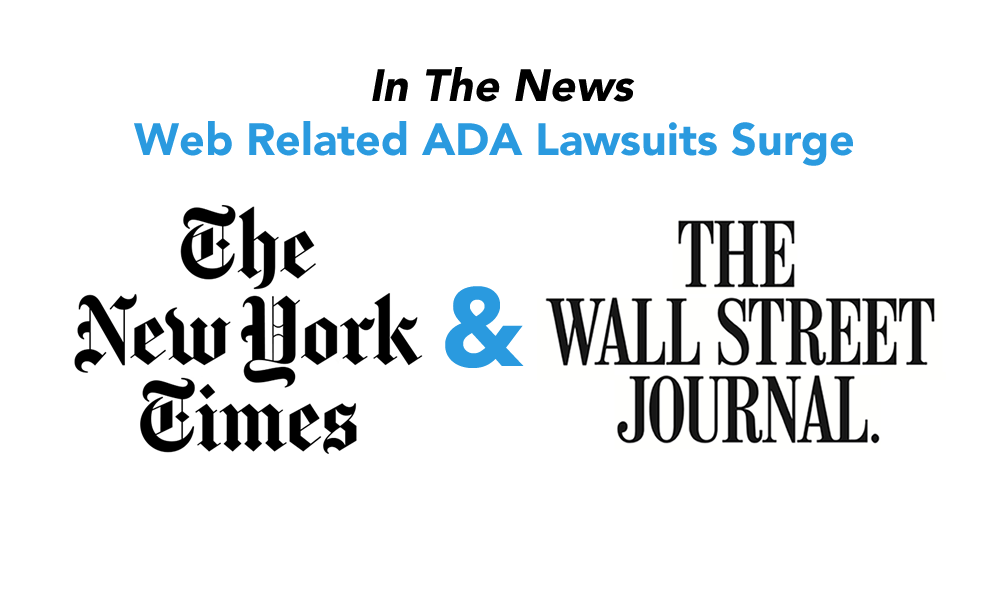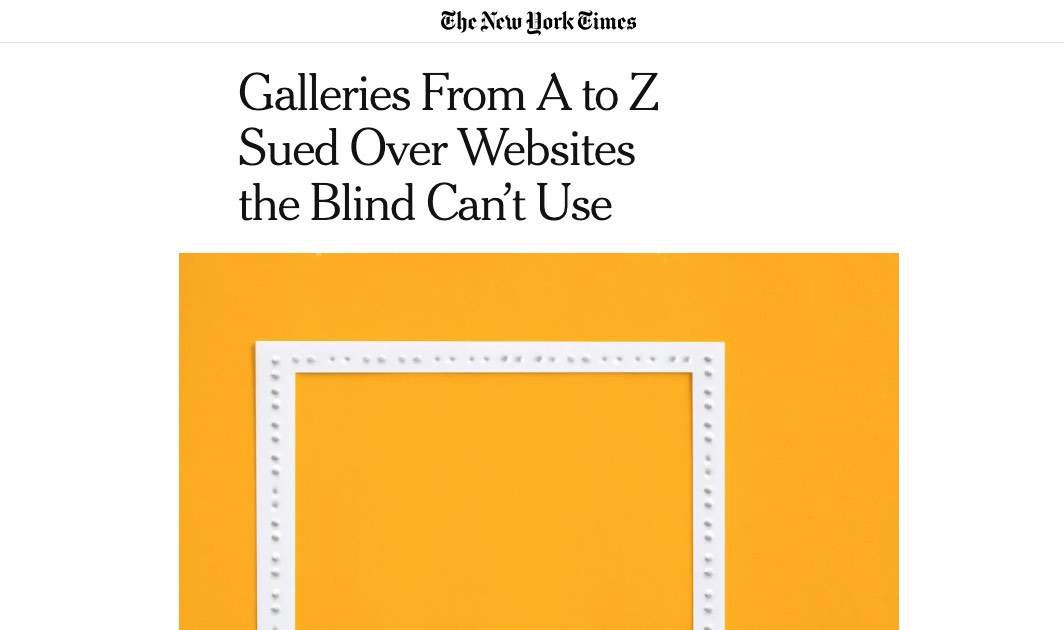
New York Times & Wall Street Journal Cover Web-Related ADA Lawsuit Surge
Within a day of each other the Wall Street Journal and New York Times put the spotlight on the explosion of web-related ADA lawsuits. Both articles cite the recent report from the lawfirm Seyfarth Shaw that showed that these lawsuits nearly trippled from 2017 to 2018. Adding fuel, in a much watched case in California, the 9th Circuit recently sided with the plaintiff against Dominos - reaffirming yet again, that websites are covered by the ADA.
The Wall Street Journal : Lawsuits Surve Over Websites' Access for the Blind

The WSJ article starts with "Businesses with websites that can't be navigated by the blind are getting pummeled with lawsuits". And not just once. The article cites UsableNet's study of these cases, which found that 20% of those businesses had been sued previously for the same issues.
The article does a good job of summarizing the perspectives of businesses, and people with disabilities who rely on the web the same way others do, but websites that are not properly designed for accessibility therefore discriminate. However many who face such suits feel this is legal extortion.
The recent ruling in favor of the plaintiff in Robles v Dominos punctuates the clear trend in the courts that continue to support the argument that websites and now web apps are "places of public accommodation" protected by the ADA. Of note in this case, is that the 9th Circuit supports the limitation that the law only applies in cases where there is a "nexus" between the website and a physical location. So at least in that district, the law only applies to brick-n-mortar.
New York Times : Galleries From A to Z Sued Over Websites the Blind Can't Use

The New York Times article drilled into a recent spree of suits aimed at New York's art galleries. Here, two plaintiff with the same attorney methodically split up the list of art galleries and issued suits in two batches.
The article highlights the importance of accessibility for people with disabilities: ““Think about your own daily life and how much you use the internet,” said Chris Danielsen, the director of public relations at National Federation of the Blind, and a blind person himself. “And then imagine almost every day you encountered something that you literally could not do.””
“Depending on one’s perspective, the suits are either salvos for civil rights or a way for lawyers to scrape the internet for a quick paycheck.”
“Their motives notwithstanding, the lawsuits expose what advocates for the blind say is a real problem: Many websites remain unusable to the visually impaired, even if those people equip their devices with software and hardware adapted for that use.”
The two articles reflect the growing impact on businesses, as well as the growing awareness about the role that the Internet plays in the lives of people with disabilities. However, neither article provides guidance for what website owners should be doing to make their websites accessible. That's where we can help.